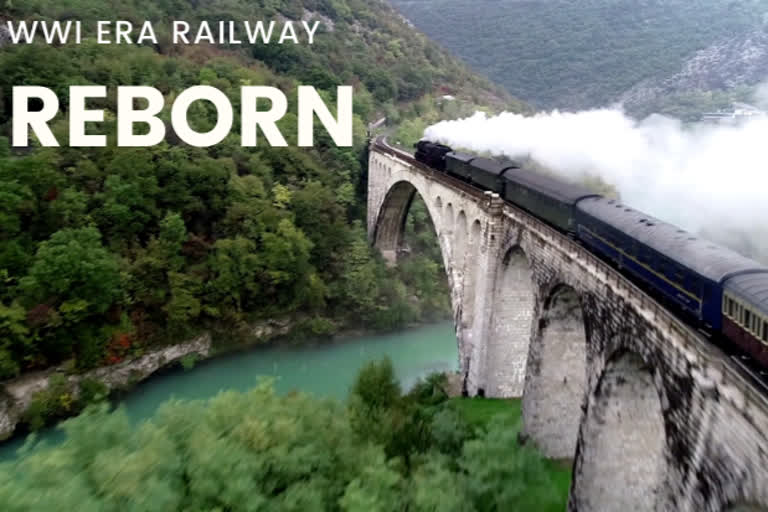Solkan: At a time when bullet trains have become synonymous with modernity, a stunning, winding railway, linking northern Slovenia with the Adriatic Sea has been reborn as a popular tourist experience for visitors from Europe, Asia and beyond. Chugging through the picturesque hills of western Slovenia, the Bohinj Railway born again last month.
The Bohinj Railway was constructed by the Austro-Hungarian Empire in the early 20th century. Its importance faded after the First World War.
It was built by the Austro-Hungarian Empire from 1900 to 1906 as part of a new strategic railway.
The aim was to connect western Austria and southern Germany with the then Austro-Hungarian port of Trieste.
The line starts in Jesenice, at the southern end of the Karawanks Tunnel.
It then crosses Slovenia's Julian Alps -- a mountain range -- through the Bohinj Tunnel, and passes the border town of Nova Gorica, before crossing the Italian border and reaching Trieste.
During the First World War, the railway carried the majority of Austrian military supplies to the Isonzo Front, the battleground for Austro-Hungarian and Italian armies.
With the dissolution of Austria-Hungary in 1918 and the isolation of communist Yugoslavia after 1945, the railway decreased in importance throughout the 20th century.
But, with Slovenia's accession to the European Union in 2004, the railway discovered a new purpose, as a convenient passenger and freight route from Central and Eastern Europe to the Italian port of Trieste.
Read also: Indian Railways conduct trial run in Kashmir ahead of resuming services
"This railway was built in the beginning of the 20th century as the main line, as a part of the so-called Alpine Railways Programme, which was made to connect Vienna, Prague, and Munich with the Adriatic Sea, with Trieste, which was the most important port of the Austro-Hungarian Empire," explained conductor (Ticket collector) Matjaz Marusic.
"This railway lost its importance and became practically a local railway line, but nowadays it is getting even more important for tourism."
Distinctive features of the railway are the 6,339-metre (20,797 ft) long Bohinj Tunnel, under 1,498 meters (4,915 ft) high Mount Kobla.
And the Solkan Bridge with its 85-metre (279 ft) wide arch over the Soca River.
In 1986, then Yugoslav Railways started operating steam train tourist rides, until 1991.
After the breakup of Yugoslavia, Slovenian Railways continued to offer tourist rides, increasing from four rides a year to 19 in 2019.
"It is really a jump into the history," said tourist guide Ajda Perko.
" Especially now when Japanese (tourists) came. It's so strange for them.
"We just need more and more time when they go out from the train, they just don't want to go in because they look at those small railway stations, they look to details of the train, they talk with the people who are actually driving still this train."
Read also: Train derails in US, forces evacuation



